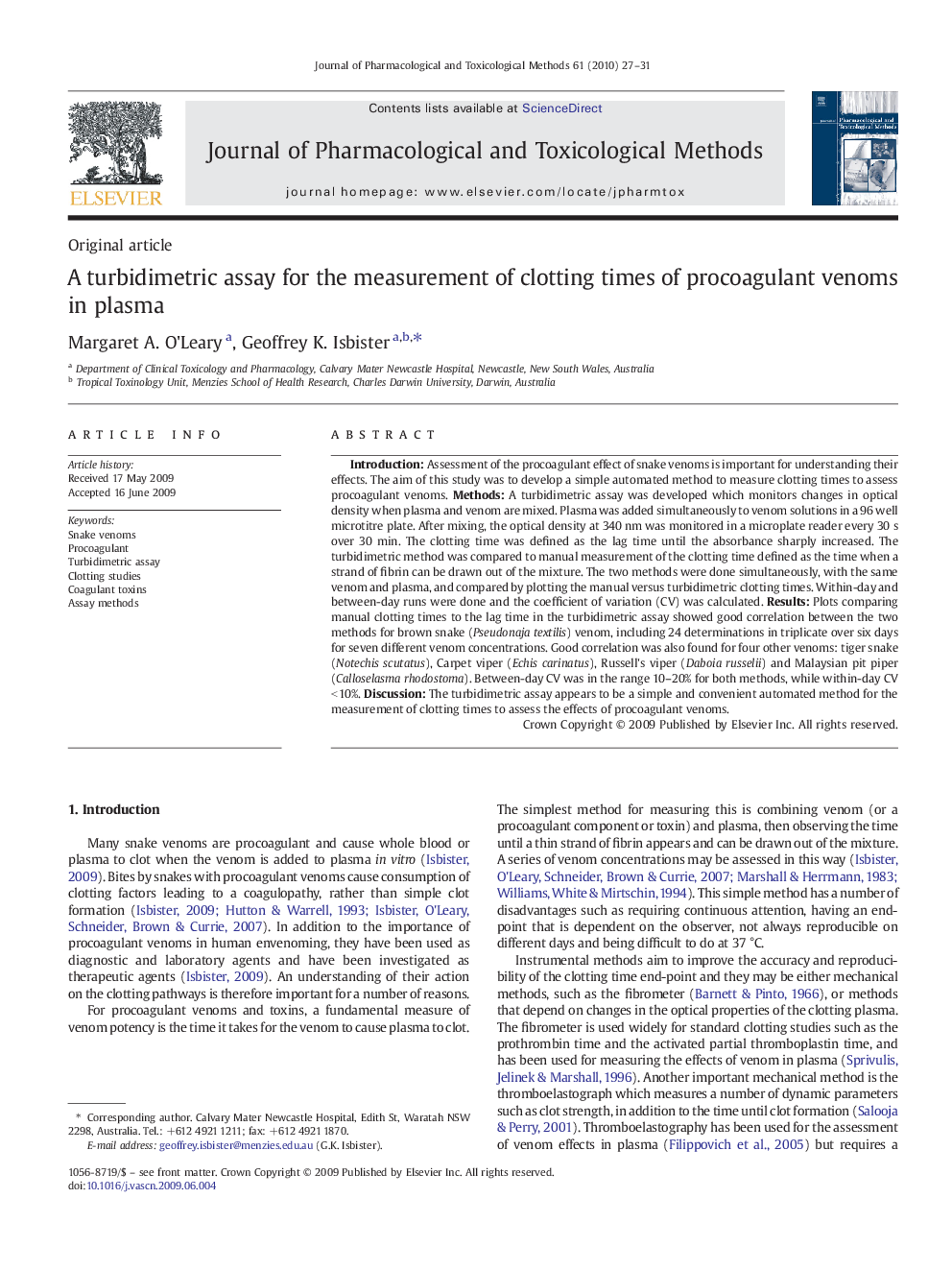| Article ID | Journal | Published Year | Pages | File Type |
|---|---|---|---|---|
| 2549408 | Journal of Pharmacological and Toxicological Methods | 2010 | 5 Pages |
IntroductionAssessment of the procoagulant effect of snake venoms is important for understanding their effects. The aim of this study was to develop a simple automated method to measure clotting times to assess procoagulant venoms.MethodsA turbidimetric assay was developed which monitors changes in optical density when plasma and venom are mixed. Plasma was added simultaneously to venom solutions in a 96 well microtitre plate. After mixing, the optical density at 340 nm was monitored in a microplate reader every 30 s over 30 min. The clotting time was defined as the lag time until the absorbance sharply increased. The turbidimetric method was compared to manual measurement of the clotting time defined as the time when a strand of fibrin can be drawn out of the mixture. The two methods were done simultaneously, with the same venom and plasma, and compared by plotting the manual versus turbidimetric clotting times. Within-day and between-day runs were done and the coefficient of variation (CV) was calculated.ResultsPlots comparing manual clotting times to the lag time in the turbidimetric assay showed good correlation between the two methods for brown snake (Pseudonaja textilis) venom, including 24 determinations in triplicate over six days for seven different venom concentrations. Good correlation was also found for four other venoms: tiger snake (Notechis scutatus), Carpet viper (Echis carinatus), Russell's viper (Daboia russelii) and Malaysian pit piper (Calloselasma rhodostoma). Between-day CV was in the range 10–20% for both methods, while within-day CV < 10%.DiscussionThe turbidimetric assay appears to be a simple and convenient automated method for the measurement of clotting times to assess the effects of procoagulant venoms.
